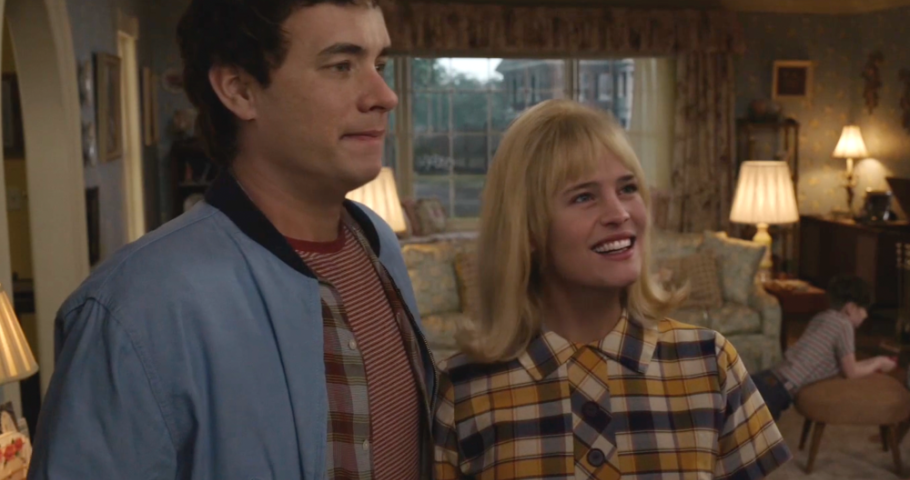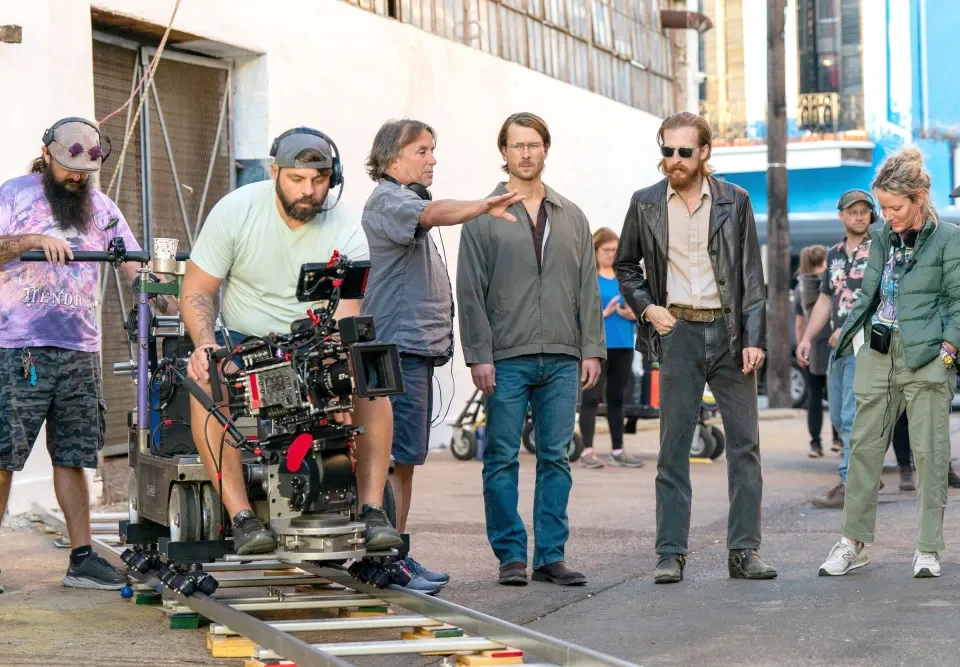
Gravitas Ventures Acquires North American Rights to Sci-Fi Feature ‘Roswell Delirium’ – Film News in Brief
10/26/2024
The Brink of Dreams’ Directors Receive Variety MENA Talent of the Year Award
10/27/2024According To The variety In Hollywood, most movies tell stories. But not “Here.”
Adapted from a conceptual graphic novel by Richard McGuire where the perspective is the same on every page — the living room of a century-old American house — while rectangle-shaped panels within each frame reveal actions from different years, if not entirely separate epochs, “Here” is about an idea.
Have you ever sat in a place — maybe a hotel room, a park bench or a remote clearing — and wondered what happened there before? How many people have kissed on that exact spot? Or fought, or fallen in love? And what does that say about human experience, that people can be linked by common actions, and places can hold both memories and secrets?
There are deep thoughts to be found down such rabbit holes, and a film version of “Here” points in roughly the right direction, only to get distracted by a handful of far shallower threads — namely, the disappointingly generic lives of four families who inhabit the same space at different times. Reuniting with “Forrest Gump” screenwriter Eric Roth and that film’s stars, Tom Hanks and Robin Wright, director Robert Zemeckis clumsily replicates the fixed-camera conceit in what plays as an elaborate visual-effects experiment. For Zemeckis, the question isn’t how many existential truths he can squeeze into (or out of) a traditional New England living room, but whether he can get away with manipulating his actors’ on-screen ages across more than half a century. Technically, that is now possible, although the results look anything but natural, adding yet another distancing device to the already confusing assortment of events.
From “Who Framed Roger Rabbit” to “The Polar Express,” Zemeckis’ superpower has always been his pioneering spirit, while his kryptonite is a penchant for unearned sentimentality. “Here” fits that pattern to a tee, as Zemeckis dedicates his energy not to crafting fully dimensional characters, but to advancing the sort of “digital makeup” Martin Scorsese used to youthen the cast of “The Irishman,” effectively draining the project of the very thing he set out to celebrate: life.
“Here” opens with fleeting images of the home where it all happens, glimpsed through a series of neatly framed rectangles, before whisking us back more than 65 million years to a moment when dinosaurs identified this clearing as a decent place to lay their eggs. Then comes an asteroid (or maybe it’s a volcanic eruption), followed by a time-lapse Ice Age that swells and thaws in a matter of seconds.
It’s hard not to be reminded of “The Tree of Life” in this moment: There, Terrence Malick contemplated how lives that feel so important to those who experience them can seem inconsequential in the context of creation, dinosaurs and the sheer enormity of time. McGuire attempted something comparably radical in his book, expanding the comics form in the process. In lieu of telling a sequential story, he collapsed various time periods into a single scene, allowing total strangers to echo one another’s thoughts and deeds within a shared space.
Most “Here” viewers won’t have been exposed to McGuire’s graphic novel, and even those who were will find Zemeckis and Roth to be using a different strategy. In the film, it’s less about seeking unexpected connections than engineering clever transitions, while they try to align the arcs of multiple generations. Their goal is simple: to help make logical sense of an intricately nonlinear assortment of scenes. And yet, the overlapping-frames strategy tends to blur the lines between the various families involved, trapping us in a CG snowglobe, as virtual seasons change and time marches past the wide bay window. While our outward view is limited to the colonial mansion across the street, so many of the characters’ dreams lay beyond these walls.
John and Pauline Harter (played by Gwilym Lee and Michelle Dockery) are the first couple to occupy the house, which is shown being constructed in 1907. Pauline is constantly fretting over her head-in-the-clouds husband, a reckless aviator she’s afraid will one day crash. Without giving away this early-20th-century family’s fate, it should be said that worrying serves no purpose in “Here.” In fact, it can be punished in ironic ways, as if to show that obsessing over the future is the surest way to miss out on the present.
That attitude extends to Hanks’ anxious character, Richard Young, who gives up a painting career to provide for his family. Little Richie is not yet born when his dad Al (Paul Bettany) and three-months-pregnant mom Rose (Kelly Reilly) agree to buy the two-story house for a whopping $3,400 in 1945. It won’t change hands again for another 60 years, making the Young family and their three kids the people we see most, whereas the African Americans who buy it from them and the Native tribe that lived there long ago feel largely symbolic — the dramatic equivalent of an Indigenous land acknowledgment.
When Hanks first appears, digitally de-aged to look like he did in his “Bosom Buddies” days, it gives some focus to what can feel like an endless PowerPoint presentation. When he introduces his teenage girlfriend Margaret (Wright) a few scenes later, their movie-star status is a clue that we should be paying attention — not to the horrendous-looking face replacement technology, which looks more like hi-def Sims than the actors’ younger selves, but to these two characters.
As with Richard Linklater’s “Boyhood,” presenting a longitudinal look at so many milestones in an American family invites us to consider the universality of those experiences. Still, “Here” lacks the kind of specificity that might elevate such scenes beyond mere cliché, putting the burden on composer Alan Silvestri (another “Forrest Gump” vet) to supply the emotion. While it’s true that a great deal of life happens in living rooms, Roth hijacks events that should happen elsewhere in order to stage a birth, a death, a wedding and three sex scenes in the same space where Christmas and Thanksgiving are celebrated.
Zemeckis gives everything a slightly corny, Currier and Ives-like feel (especially in several Colonial-era vignettes, when Ben Franklin features), as if he’s competing with vintage Saturday Evening Post covers to capture a typical American family. But the spot where he’s chosen to place his static camera — at a slight angle, couch facing the screen — suggests a far more ubiquitous visual reference: that of the classic sitcom.
The blocking constantly reinforces that model, and because Zemeckis doesn’t cut or go in for close-ups, he obliges his actors to approach the lens anytime he wants us to see their faces. Ninety-four minutes in, the director finally opts to unfreeze his camera, swiveling around to observe a key moment between two characters. Had Zemeckis built “Here” as a museum installation instead of a film, the fixed POV probably would have made sense. But we’ve come to be moved, and for that to work, the camera should too.




